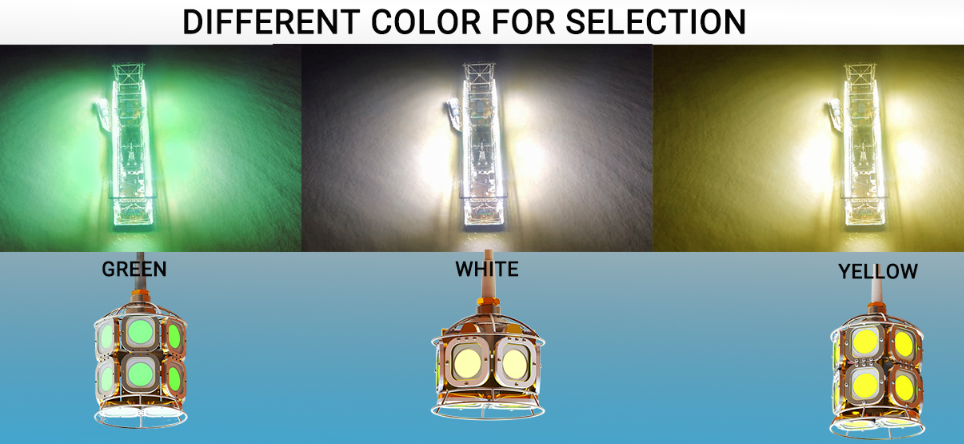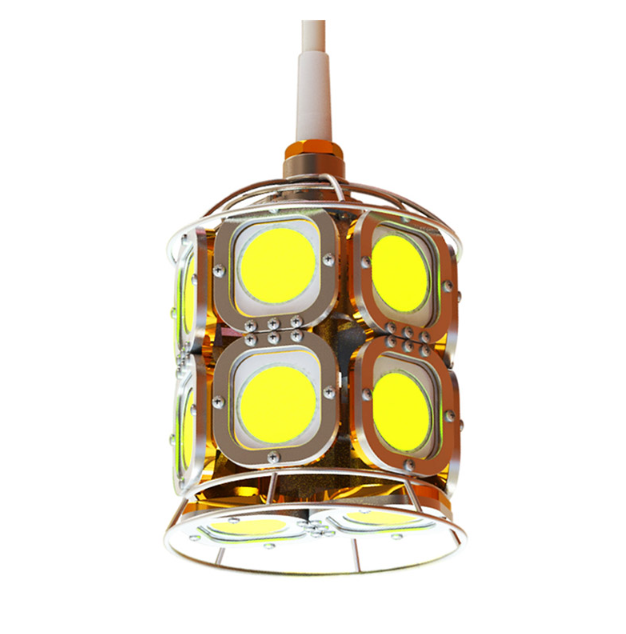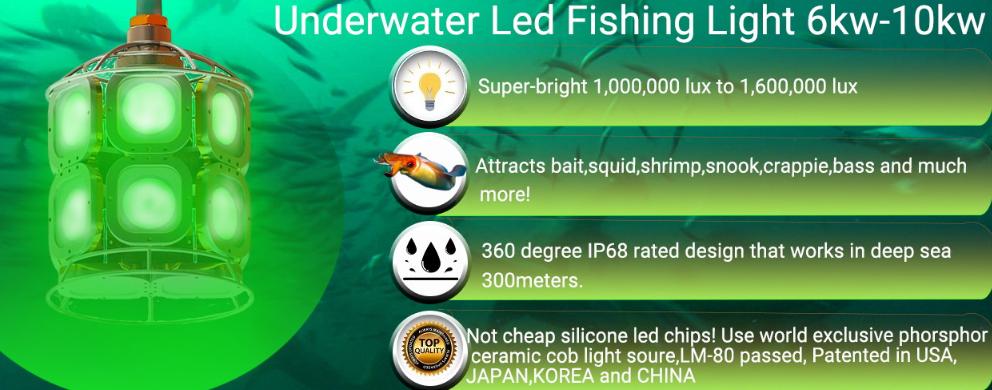Underwater Squid Light plays a pivotal role in various marine industries, from aquaculture to fisheries. These specialized lights are designed not only to attract squid but also to facilitate operations in murky underwater environments. As technology advances, manufacturers like CAS-CERAMIC OPTOELECTRONICS TECHNOLOGY CO., Ltd. are at the forefront, providing cutting-edge solutions to meet the evolving needs of these industries.
Current Market Landscape
Demand in Aquaculture
Aquaculture operations increasingly rely on Underwater Squid Light to improve productivity and sustainability. These lights are used to attract squid, which is a valuable commodity in the seafood market. By enhancing visibility in underwater farms, aquaculturists can monitor and manage their stock more effectively, leading to better growth rates and higher yields.
Fisheries Utilization
In commercial fisheries, Underwater Squid Light serve multiple purposes. They are deployed to attract squid to fishing grounds, aiding in the efficiency of catching operations. Moreover, the lights contribute to reducing bycatch of non-target species by drawing squid specifically to designated areas, where they can be harvested with minimal ecological impact.
Technological Innovations
Manufacturers like CAS-CERAMIC OPTOELECTRONICS TECHNOLOGY CO., Ltd. are driving innovation in underwater lighting technology. Advanced LED systems with customizable wavelengths and intensities are being developed to optimize attraction rates and minimize energy consumption. These innovations not only improve operational efficiency but also align with sustainability goals by reducing the ecological footprint of aquaculture and fisheries activities.
Needs in the Industry
Enhanced Attraction Efficiency
One of the primary needs in the industry is the continuous improvement of attraction efficiency. Squids are highly sensitive to light, and the right combination of wavelength and intensity can significantly enhance their response. Manufacturers are therefore focusing on developing lights that mimic natural bioluminescence to maximize attraction rates while minimizing energy expenditure.
Durability and Reliability
Given the harsh underwater conditions in which these lights operate, durability and reliability are paramount. Lights must withstand constant exposure to saltwater, pressure changes, and potential physical damage. Manufacturers are investing in robust materials and sealing techniques to ensure their products can endure extended underwater deployments without compromising performance.
Customization and Integration
Aquaculture and fisheries operations vary widely in scale and specific requirements. Therefore, there is a growing demand for customizable lighting solutions that can be tailored to different species, environmental conditions, and operational needs. Manufacturers are responding by offering modular designs and integration capabilities that allow for seamless incorporation into existing infrastructure.
Solutions by CAS-CERAMIC OPTOELECTRONICS TECHNOLOGY CO., Ltd.
Advanced LED Technology
CAS-CERAMIC OPTOELECTRONICS TECHNOLOGY CO., Ltd. specializes in advanced LED technology tailored for underwater applications. Their LEDs are designed to emit precise wavelengths optimized for attracting squid, ensuring high visibility and attraction rates. The use of ceramic substrates enhances thermal management, prolonging the lifespan of the lights even under continuous operation.
Customizable Solutions
Recognizing the diverse needs of aquaculture and fisheries, CAS-CERAMIC OPTOELECTRONICS TECHNOLOGY CO., Ltd. offers customizable lighting solutions. Their products can be adjusted to emit specific wavelengths and intensities, accommodating different species’ preferences and environmental conditions. This flexibility allows aquaculturists and fisheries to maximize their operational efficiency while minimizing environmental impact.
Environmental Sustainability
Environmental sustainability is a core focus for CAS-CERAMIC OPTOELECTRONICS TECHNOLOGY CO., Ltd. Their LED lights are designed to be energy-efficient, reducing overall power consumption compared to traditional lighting systems. By minimizing energy use and incorporating eco-friendly materials, they support sustainable practices in aquaculture and fisheries, aligning with global conservation efforts.
Key Features of CAS-CERAMIC Optoelectronics Technology CO., Ltd. Underwater Squid Light
Anti-Corrosive Design and High Pressure Resistance
CAS-CERAMIC’s Underwater Squid Light is equipped with anti-corrosive brass heat sinks and frames made from materials resistant to high pressures and saltwater. This robust construction allows the lights to operate effectively at depths of up to 500 meters, ensuring durability and reliability in challenging marine environments.
Specialized Spectrum for Deep Sea Fishing
The lights feature a particular spectrum carefully designed to maximize the attraction of deep-sea fish such as tuna, cod, and salmon. This spectral optimization enhances the effectiveness of fishing operations by targeting the specific light preferences of these marine species, thereby increasing catch rates and operational efficiency.
Instant On/Off with No Flickering
Unlike traditional metal halide lamps that require warm-up time, CAS-CERAMIC’s LED Underwater Squid Light offer instant on/off functionality without any flickering. This instantaneous response is crucial for maintaining operational efficiency and ensuring precise control over lighting conditions during fishing activities.
Advantages Over Metal Halide Lights
Enhanced Efficiency and Longevity
Compared to metal halide lights, CAS-CERAMIC’s LED lights exhibit significantly lower light decay, with less than 5% degradation after three years of continuous operation. This longevity translates to reduced maintenance costs and ensures consistent performance throughout the lifespan of the lights.
Superior Light Quality and Energy Efficiency
LED technology provides superior light quality with a focused spectral distribution that matches the phototaxis responses of target fish species. This precision not only enhances attraction rates but also contributes to energy efficiency, reducing overall power consumption compared to traditional lighting systems.
Environmental and Safety Benefits
CAS-CERAMIC’s LED Underwater Squid Light is environmentally friendly, emitting minimal heat and reducing the risk of accidental burns or fires on board fishing vessels. The elimination of hazardous materials commonly found in metal halide lamps further enhances safety for crew members and marine life alike.
Future Trends and Innovations
Integration of Smart Technologies
Looking ahead, the integration of smart technologies such as IoT (Internet of Things) capabilities is poised to revolutionize underwater lighting systems. These advancements will enable real-time monitoring of environmental conditions and squid behavior, allowing for adaptive lighting strategies that further enhance attraction efficiency and operational outcomes.
Biologically-Inspired Designs
Inspired by natural bioluminescence, future designs may incorporate biomimetic principles to improve attraction rates. By closely mimicking the light patterns and wavelengths that squid naturally respond to, manufacturers can create more effective and sustainable lighting solutions for aquaculture and fisheries.
Enhanced Data Analytics
Advancements in data analytics will play a crucial role in optimizing the performance of Underwater Squid Light. By analyzing data on squid behavior, environmental factors, and lighting parameters, manufacturers and operators can fine-tune their strategies to achieve maximum efficiency and sustainability.
Conclusion
Underwater Squid Light represents a critical technology in modern aquaculture and fisheries, offering solutions to enhance productivity while promoting environmental sustainability. As manufacturers like CAS-CERAMIC OPTOELECTRONICS TECHNOLOGY CO., Ltd. continue to innovate, the industry can expect further advancements in efficiency, customization, and integration of smart technologies. These developments will not only benefit businesses by improving operational outcomes but also contribute to the responsible stewardship of marine resources.
Post time: Jun-21-2024







